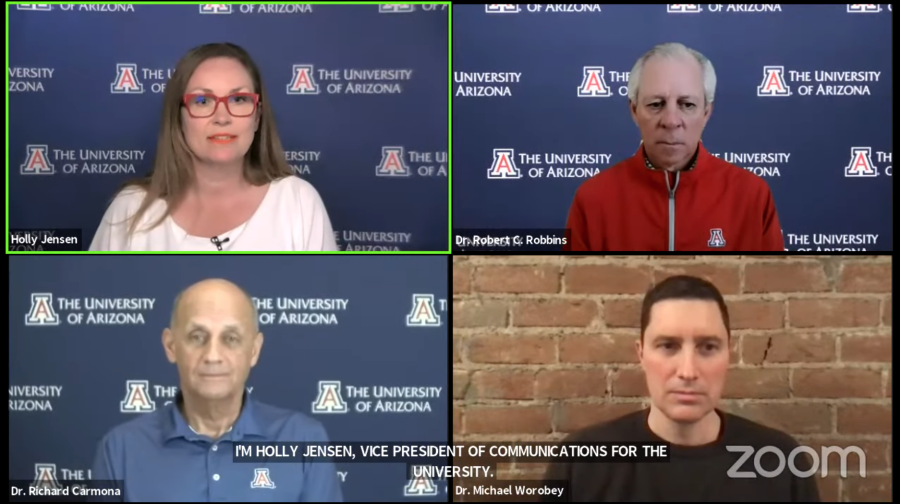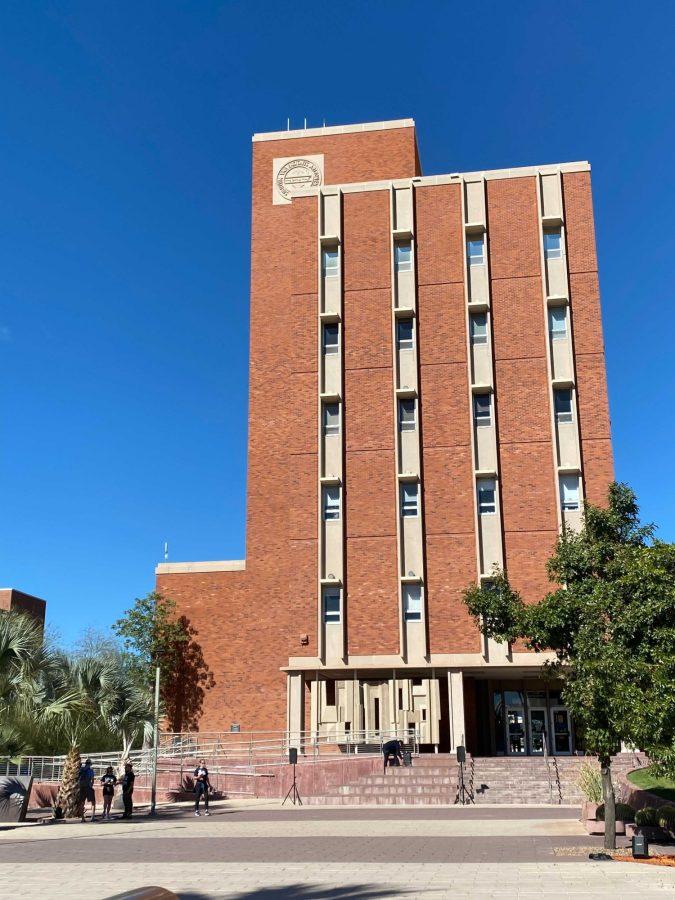The University of Arizona’s COVID-19 virtual university status update team met on Monday to discuss the beginning of Phase Three, a new variant of COVID-19 on campus and new COVID-19 data.
The UA will begin Phase Three of reentry this week. Classes of 100 or fewer students designated as “in-person” or “flex in-person” may begin meeting for in-person instruction.
UA President Dr. Robert C. Robbins reminded viewers that the university still requires face coverings on campus, and it will continue to enforce all other COVID-19 mitigation policies.
“I can’t emphasize that enough,” Robbins said. “We’re in the fourth quarter of this term and we need to keep doing what we’ve been doing that’s been so successful and gotten us to this point.”
This plea comes four days after Arizona Gov. Doug Ducey signed an executive order phasing out the continued enforcement of local mask mandates, instead asking Arizonans to “act responsibly.” Robbins clarified that this order does not apply to the university’s policies.
RELATED: Gov. Ducey lifts remaining COVID-19 restrictions, Tucson Mayor continues with mask mandate
“We’re going to keep running the plays in our playbook because they’ve been so successful,” Robbins said, “and I really ask everyone to be team players and join us in this. It’s worked. We’re going to keep doing it.”
The UA has now administered a grand total of 102,734 doses of the COVID-19 vaccine as of March 27. Of those vaccinated at the UA Point of Distribution, 22.6% self-identify as Hispanic or Latinx.
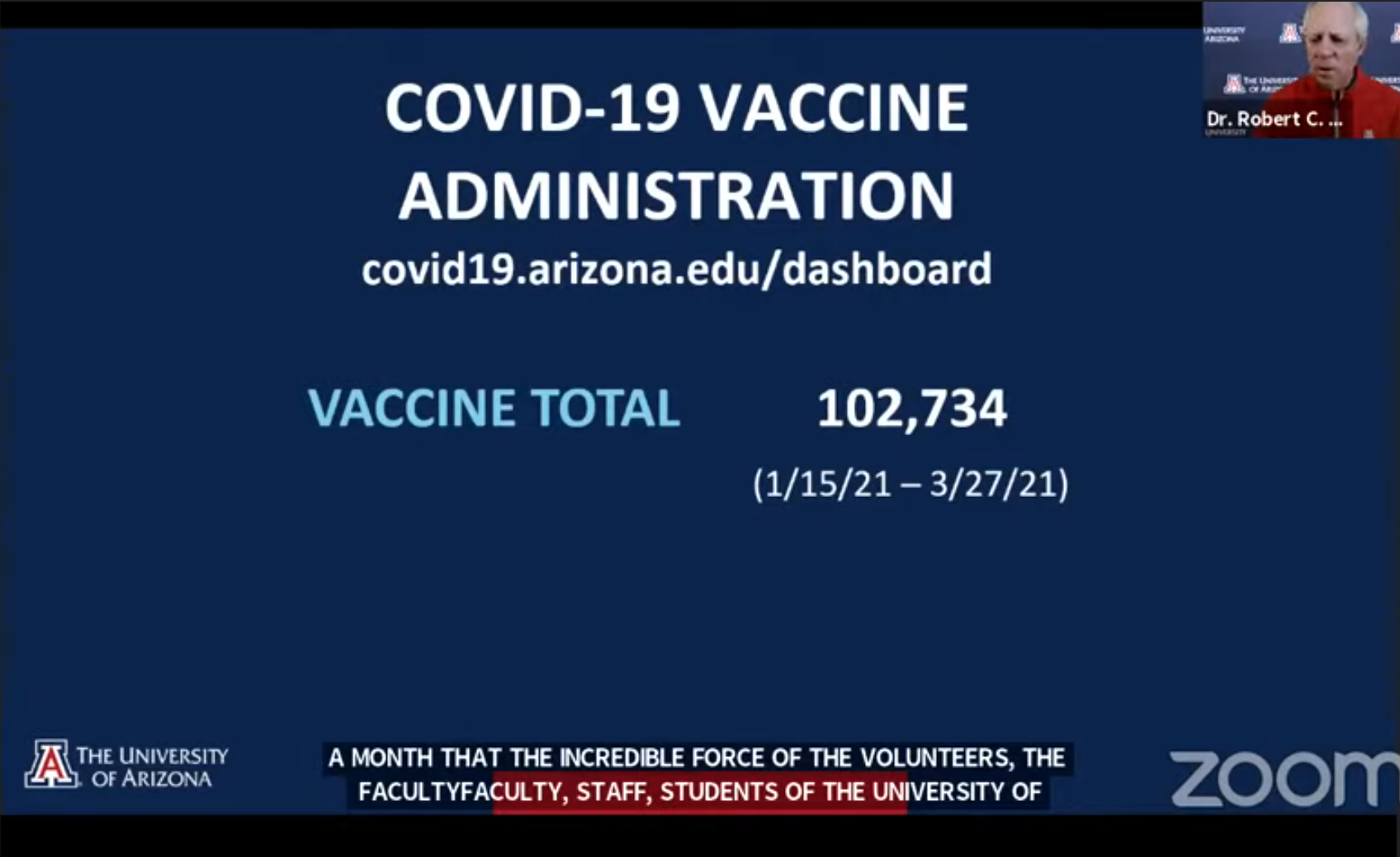
From March 18 to March 27, the UA administered 11,379 COVID-19 tests, which resulted in 39 positives – a positivity rate of 0.3%.
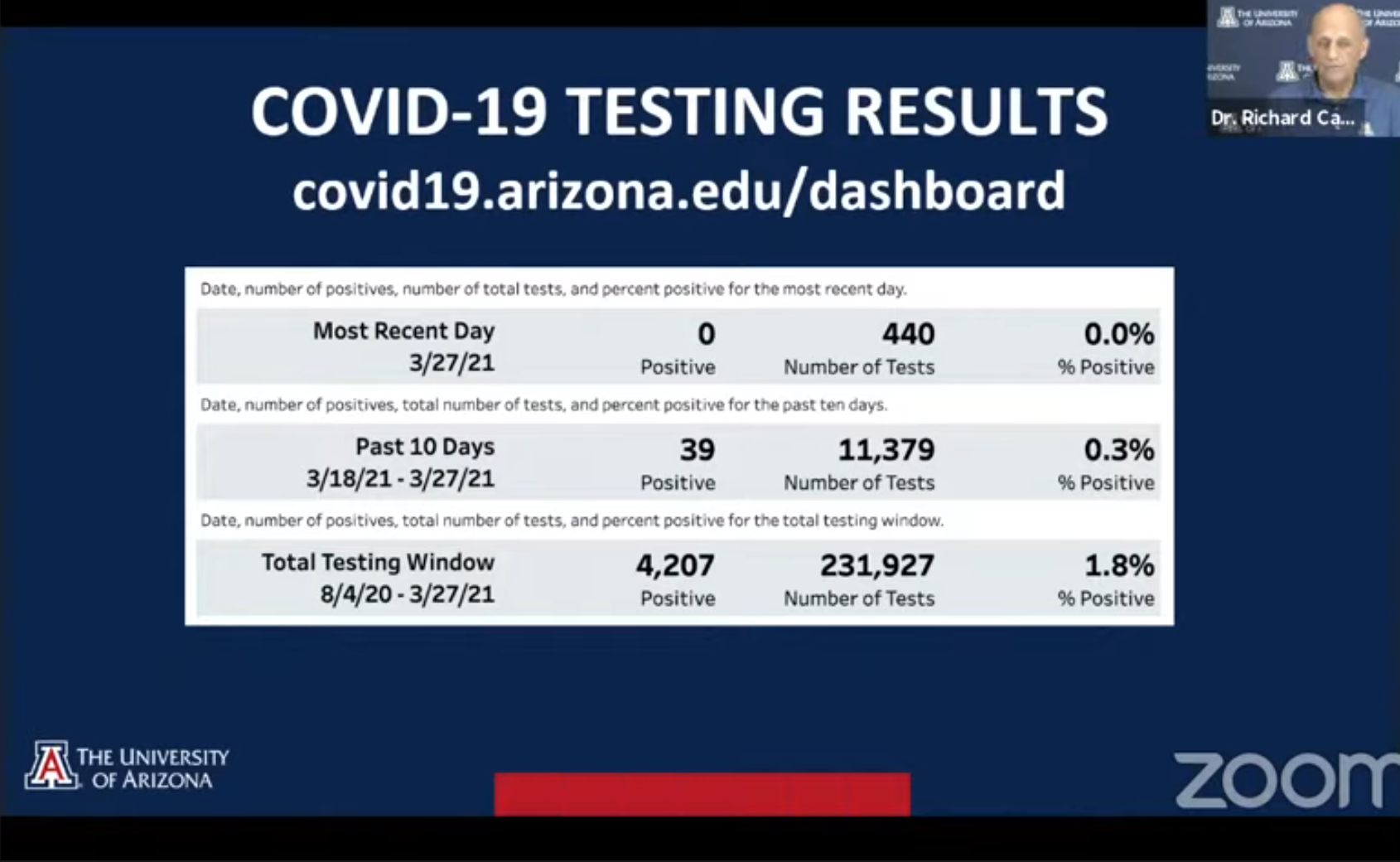
Last week, the COVID-19 rate of transmission slightly increased to 0.77 from 0.75 the previous week in the university zip-code area. The Rt on the county level decreased to 0.77 from 0.80 the previous week.
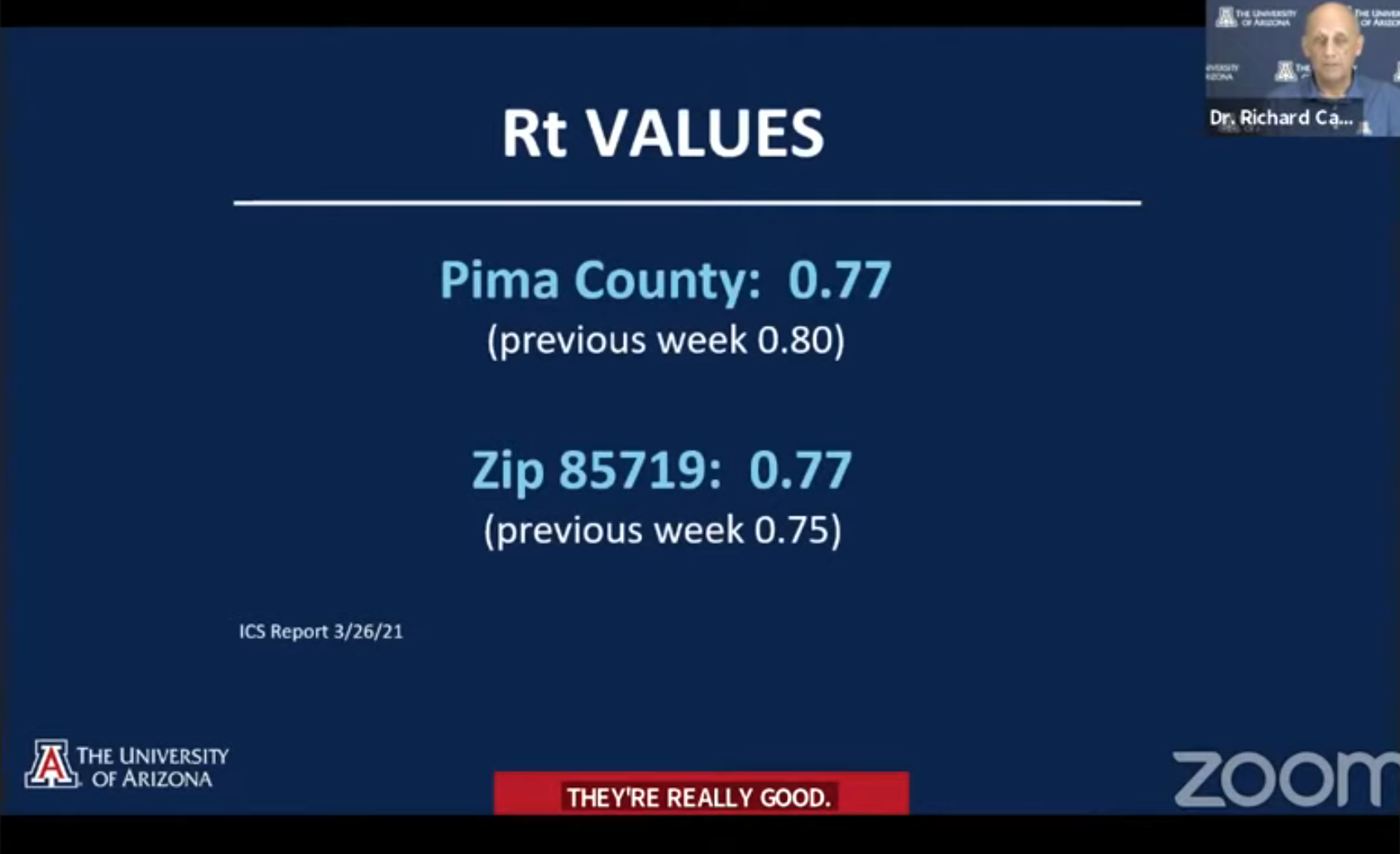
Task force director Dr. Richard Carmona reaffirmed the president’s commitment to enforcing public health measures.
“It looks like our public health practices are working,” Carmona said. “We still have some problems, and we will not be complacent, but we’re happy that we’re looking a lot better. If you look at our transmission values … . [Transmission is] up a little bit, but below 1.0. They’re really good. Until we extinguish transmissibility, it’s unacceptable and we have to adhere to the best practices in public health.”
The Campus Area Response Team was deployed to four incidents of large gatherings last week, down from eight incidents the previous week. None of these incidents was a gathering of 100 or more individuals – an improvement from previous weeks – but one was a gathering of 50-99 individuals.
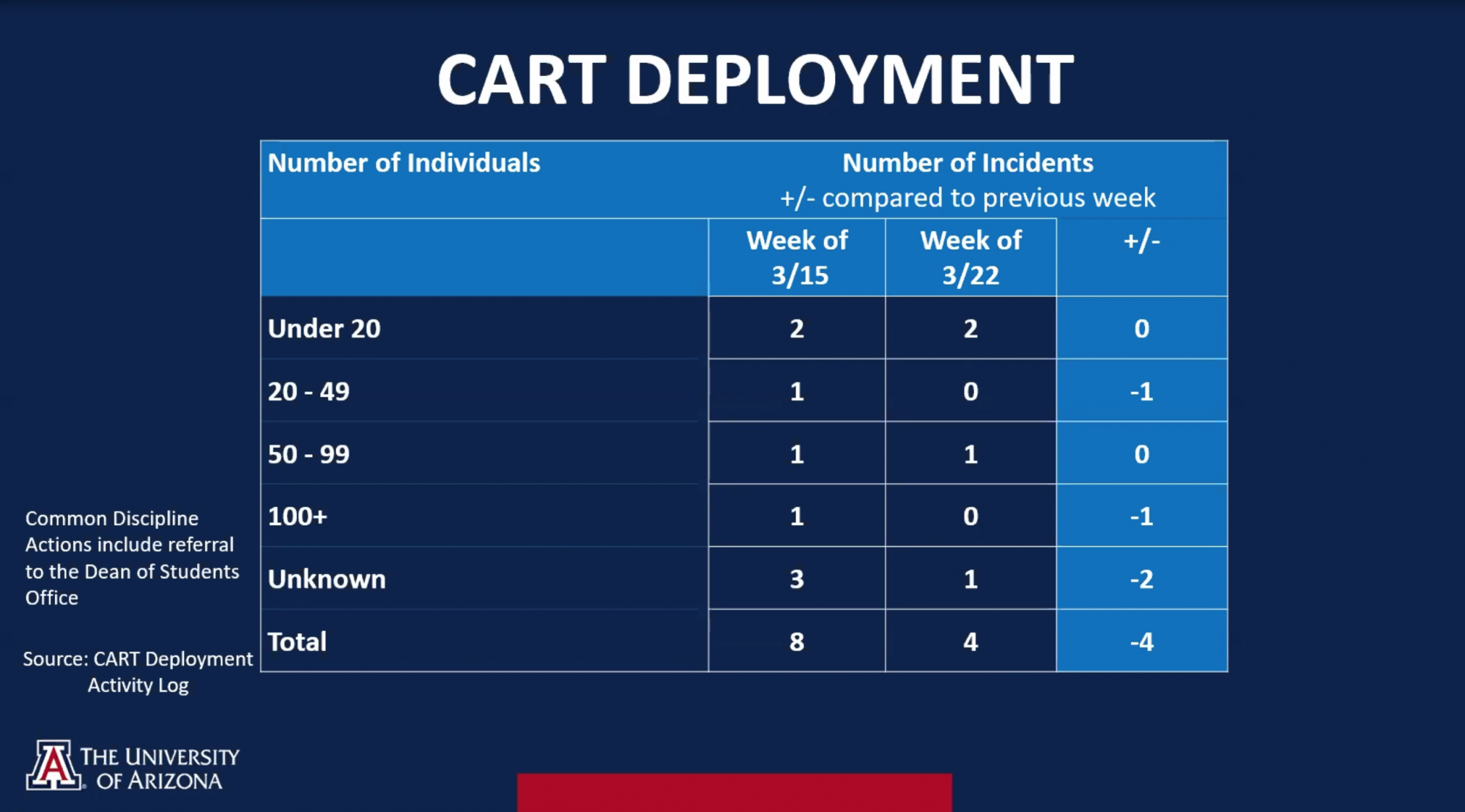
Dr. Michael Worobey, professor of ecology and evolutionary biology at the UA, joined the team to discuss the new variants of COVID-19 popping up in the U.S.
“Just less than two weeks ago, I collected samples from eight subjects under a University of Arizona IRB-approved research study that I’ve been doing for several months now,” Worobey said. “When we sequenced the genomes, not only did all samples yield genomes, which is actually not what we normally see … but all 8 of these yielded viral genomes and we think that’s because B.1.1.7 causes a higher viral load, and all 8 were B.1.1.7. Six of the eight were symptomatic, which is a higher number than we had been seeing with classic versions of the virus. again, we think that’s linked to the clinical higher hospitalization and mortality rates.”
The UA announced Thursday, March 25, that the B.1.1.7 (UK) variant of COVID-19 had been detected on campus. This variant is 50% more transmissible and symptoms from the virus are more severe.
The status update team will meet again next Monday, April 5.
Follow Kristijan Barnjak on Twitter



